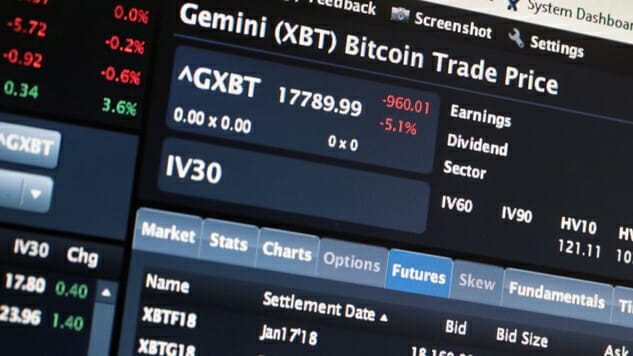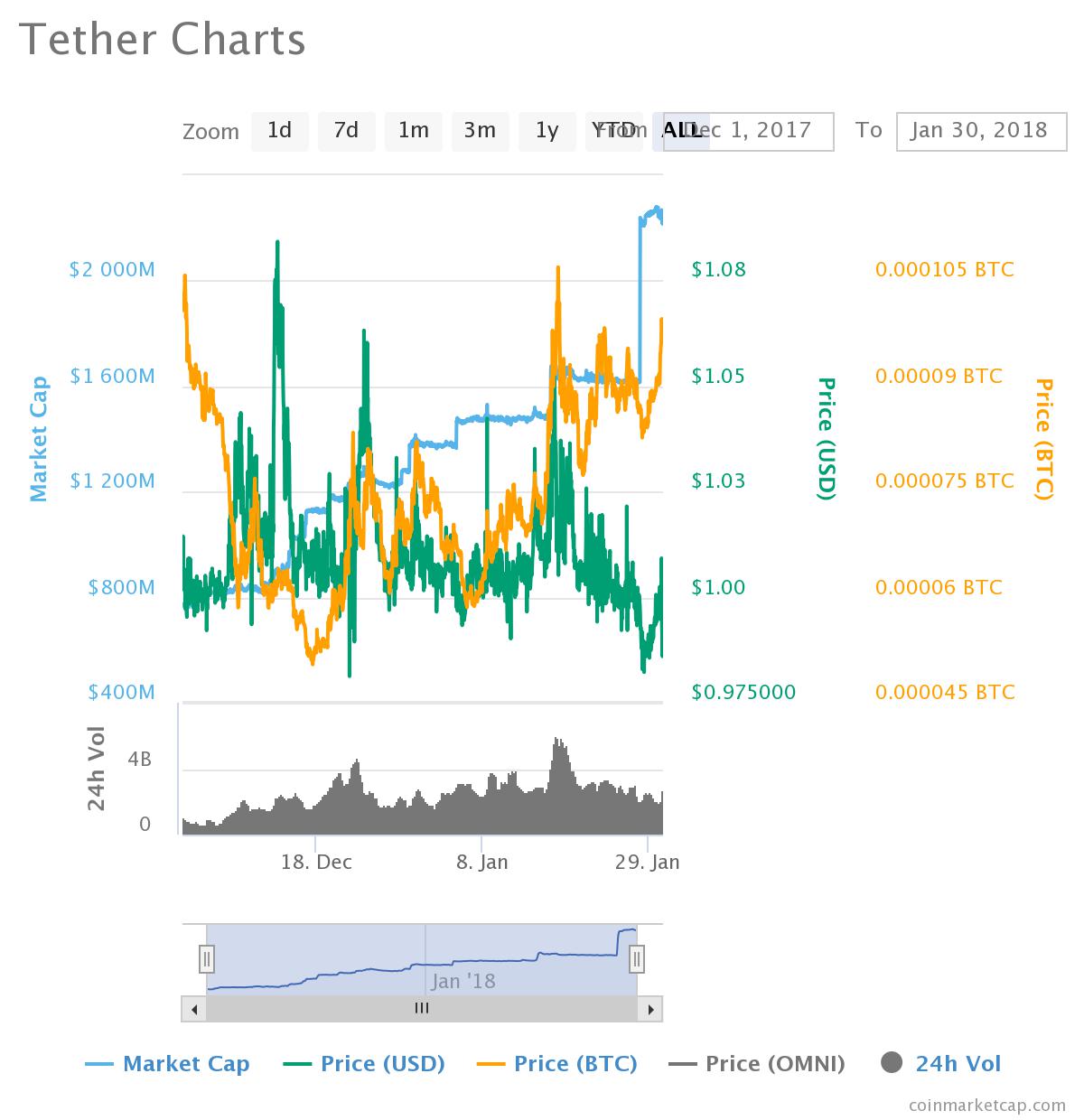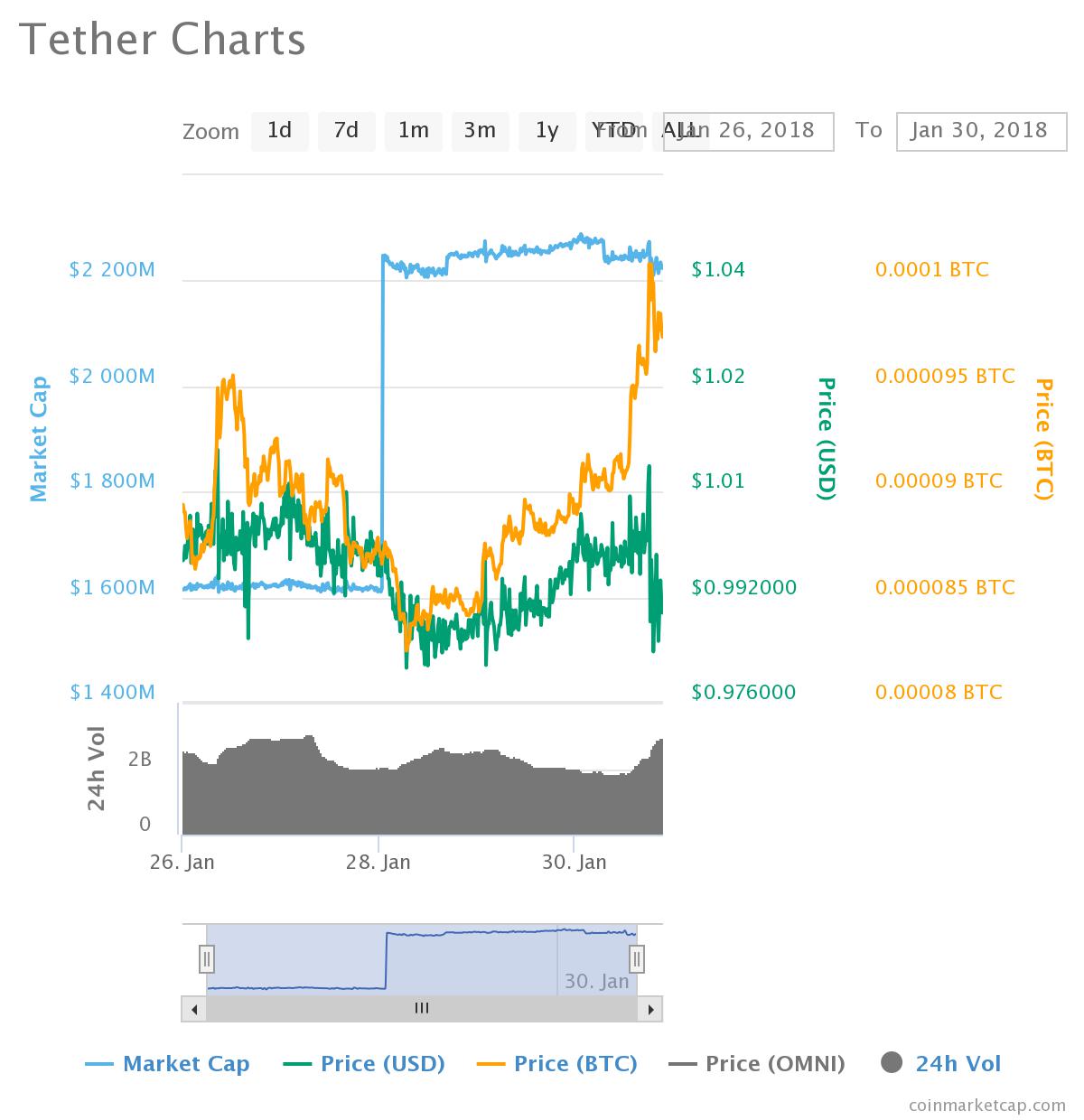A Primer on The Bitfinex and Tether Subpoenas That Rocked the Cryptocurrency Markets
Photo by Scott Olson/Getty
To those of us already plugged into the cryptocurrency world, yesterday’s news was anything but a surprise. Bloomberg was the first to report the long-anticipated bombshell:
The U.S. Commodity Futures Trading Commission sent subpoenas on Dec. 6 to virtual-currency venue Bitfinex and Tether, a company that issues a widely traded coin and claims it’s pegged to the dollar, according to a person familiar with the matter, who asked not to be identified discussing private information. The firms share the same chief executive officer.
Here’s a quick primer on what this whole ordeal is, and why it matters.
What Is Bitfinex?
If you want to buy cryptocurrency, you must go to an exchange to buy it, just like you buy stocks from an exchange like a Robinhood account. Coinbase is the only mainstream exchange in the United States, and they sell four cryptocurrencies: Bitcoin, Bitcoin Cash, Ethereum and Litecoin. You purchase them using U.S. Dollars, but this is the exception in the market, rather than the norm. There are thousands more cryptocurrencies, and if you want to buy them, you must venture to other exchanges where almost all do not accept U.S. Dollars. When I purchase coins on other exchanges with “U.S. Dollars,” what I actually do is:
1. Buy Litecoin on Coinbase.
2. Transfer the Litecoin to my other exchange.
3. Sell Litecoin for Bitcoin.
4. Use Bitcoin to purchase other cryptocurrencies.
(I use Litecoin as an intermediary because it is the fastest and has extremely low fees. If you’re wondering why I don’t just buy Bitcoin and transfer it: not only are Bitcoin’s fees dramatically higher, but it is a far slower transfer than Litecoin.)
So enter Bitfinex. It is one of these other exchanges that sells a much larger array of coins, and they devised a solution to get around the arduous process that I just described (a “stablecoin” called Tether, which we’ll get to in a bit). In my beginners guide to buying cryptocurrency, I warned newbies to stay the hell away from Bitfinex thanks to questions surrounding their solvency. Per a November article in the New York Times:
Bitfinex, which is officially incorporated in the British Virgin Islands, has been fined by regulators in the United States and cut off by American banks, and it has lost millions of dollars of customer money in two separate hackings, leading critics to question whether it even has the money it claims to hold.
These subpoenas are likely designed to get to the heart of that question. Now, it’s not unusual for regulators to approach exchanges and ask for certain kinds of data. Cryptocurrency is the greatest invention in the history of money laundering, and exchanges are one of the few chokepoints where regulators can access the information that they need. What is unusual is a subpoena, as well as Bitfinex’s relationship with Tether.
What Is Tether?
Tether is a cryptocurrency designed to get around that U.S. Dollar to Litecoin to Bitcoin fiasco that I laid out above. Its ticker symbol is “USDT,” and it is designed to act as an intermediary between the U.S. Dollar and the cryptoverse. In order for this to be a legitimate option, for every 1 USDT Tether issues, they must have $1 in the bank. Otherwise, it’s fake money backed by absolutely nothing. Tether only has value so long as people believe that they can exchange their 1 USDT for $1 at any time.
Bitfinex’s CEO, CFO, chief strategy officer, chief compliance officer and general counsel are also Tether’s CEO, CFO, chief strategy officer, chief compliance officer and general counsel—meaning that if you go to Bitfinex to purchase cryptocurrencies using Tether, you are basically paying Bitfinex with their own money (on top of the fees they rake in).
Tether wasn’t really a big deal until March 2017. This was when it finally was cut off from the traditional banking system, and it soon became much more aggressive. Tether and Bitfinex soon filed a lawsuit on April 5, 2017 against their former banker, Wells Fargo. They withdrew the lawsuit a week later, and didn’t publicly address the issue until April 22nd, telling their customers:
Since April 18, 2017, all incoming international wires to Tether have been blocked and refused by our Taiwanese banks. As such, we do not expect the supply of tethers to increase substantially until these constraints have been lifted.
As you will see below, Tether’s chart on Coinmarketcap.com proves the last sentence completely false. Phil Potter, Chief Strategy Officer of Bitfinex, previewed what was to come:
“We’ve had banking hiccups in the past, we’ve just always been able to route around it or deal with it, open up new accounts, or what have you… shift to a new corporate entity, lots of cat and mouse tricks.”
Venturing deeper into the Tether rabbit hole gets a bit wonky, so if you want to know more, check out this comprehensive post written last summer by “Bitfinex’ed”—a Twitter account dedicated to exposing this supposed financial malfeasance (Tether threatened to sue this blogger, but has not as of yet).
Why Does This Matter?
Bitfinex is one of the largest exchanges in the world. If it is insolvent, that’s a really big deal. It may not cause a rush on cryptocurrencies themselves—as people are far more likely to just take their coins out of Bitfinex and deposit them in either another exchange or their own wallet (the only way to truly secure your digital coins is to store them in a literal paper wallet). However, if one of the largest exchanges turns out to be a fraud, then every other exchange is immediately called into question. Long-term, this is a good thing. We’re in the process of weeding out the snakes in the grass, but moves like this by the CTFC could create a short-term panic as fear, uncertainty and doubt seep into the market.
Where this becomes a much more concerning issue is Tether. Not only is Bitfinex potentially propped up by fake money that they issue themselves, but Tether is listed on plenty of other exchanges. The reason why Tether is so worrisome is basically the same reason that people fear central banks recklessly printing money to the point where it has no value. Tether’s value is never more or less than a few cents off $1, but its supply is nowhere near as steady as its price. With that information in mind, check out Tether’s chart.
First, a quick explainer what you’re looking at here: the blue line is Tether’s market cap (outstanding shares multiplied by the price of the coin), orange is Tether’s price in Bitcoin, and green is Tether’s price in U.S. Dollars. Since Tether is always valued within a cent or two of $1, the orange and green lines reflect the movement in the value of Bitcoin and the dollar more than anything. The blue line is our focus here.

Bloomberg reported that the initial subpoena hit Tether/Bitfinex on December 6th. By December 16th, there were 400 million more Tethers in the market (we know this because even though the price didn’t change, the market cap did—meaning that more Tethers were dumped into the market). Did Tether/Bitfinex get a $400 million liquidity injection after receiving subpoenas from the CTFC? Highly doubtful, but that’s not even the sketchiest part of the chart, let’s zoom in a bit more to this month.

They printed roughly $600 million Tethers two days before news of the subpoena dropped. That vertical line is equal parts hilarious and harrowing. The ultimate fear with Tether is that they are timing these dumps when the price of Bitcoin is low, and therefore, the price of Bitcoin is artificially inflated by a coin that has yet to prove it has the requisite amount of dollars in the bank to justify the number of Tethers being issued. There is some data backing this assertion up.
Given the facts of this developing situation, there are really only two conclusions we can come to right now:
1. Tether/Bitfinex is solvent, and this $600M dump of Tethers is proof. After all, who commits more fraud after they received a subpoena?
2. Tether/Bitfinex is not solvent, and they are about to get exposed, so they printed as much money as they could before Tether completely evaporates, literally taking their money and running.
Bitfinex is based in Taiwan, which does not have an extradition treaty with the United States, so that gives more credence to #2 than #1. Committing fraud is far easier when you don’t need to worry about being punished for it. Litigation is sure to drag this on, so we are unable to say for certain what exactly is happening, and given that Tether has never produced an audit and its auditor dissolved their relationship this past week, it doesn’t look like we’re going to get answers from Tether/Bitfinex any time soon.
Jacob Weindling is a staff writer for Paste politics. Follow him on Twitter at @Jakeweindling.







































